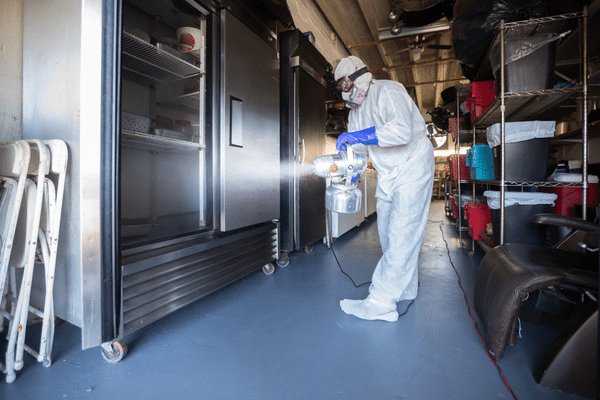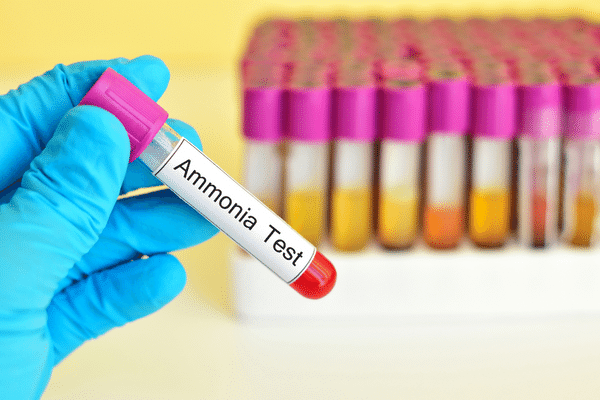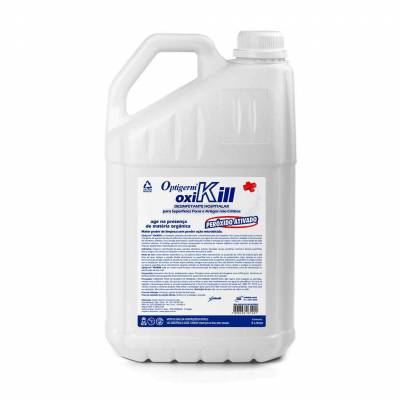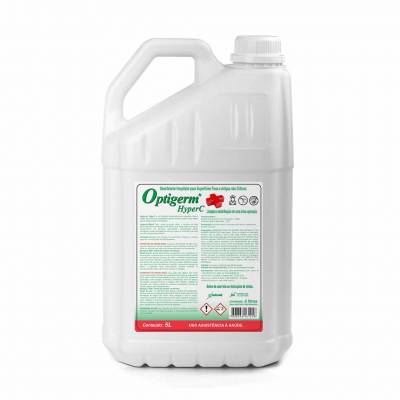What is ammonia quaternary?
One of the biggest lessons we’ve learned in recent years has been about the relationship between disinfection of environments and our health. The use of disinfectants has become one of our main weapons to protect us from viruses and bacteria, where, specifically, one component in particular has proved to be one of the main allies in this matter: the quaternary of ammonia.
Composed of some of the best cleaning products, quaternary ammonia is not found in supermarkets for sale alone. In fact, it can be said that it is a chemical element that transforms quaternary ammonium disinfectants into some of the best disinfectants on the market.
Is ammonia a disinfectant?
Ammonia is not considered a disinfectant by itself, as it does not have strong antimicrobial properties. Ammonia is a common household and professional cleaner, and is often used to clean surfaces such as floors, glass, and bathrooms, but it is primarily effective at removing dirt and stains rather than killing bacteria, viruses, and other microorganisms.
However, ammonia can be used in combination with other disinfectants, such as bleach or hydrogen peroxide, to enhance their effectiveness. When combined with these disinfectants, ammonia can help to boost their cleaning power and improve their ability to kill harmful microorganisms.
It is important to follow proper safety precautions when using ammonia or any other cleaning product, as they can be hazardous if not used correctly. Always read and follow the instructions on the product label, and use in a well-ventilated area. Additionally, it is important to never mix ammonia with bleach or other cleaning products, as this can create dangerous fumes.
This was just the first important information about quaternary ammonia that you need to know. To find out even more about other aspects such as cleanliness content, its division between generations and even a comparison with 70% alcohol, we prepared this article.
If you prefer, you can also consume this content on quaternary ammonium disinfectant in audio format on our professional cleaning podcast em Portuguese.
Keep reading!
NAVIGATE DIRECTLY BY TOPICS:
- When did disinfection come about?
- When did cleaning tools appear?
- What is disinfection? And sterilization?
- What is ammonia quaternary? How does it work?
- What generations of quaternary ammonium disinfectant?
- Quaternary ammonium disinfectant vs detergents: which is better?
- Disinfectants vs alcohol: which is more efficient?
- In which products is quaternary ammonia used?
- Solutions in residential and business disinfection from Higiclear.
When did disinfection come about?
For starters, let’s go back to the beginnings of disinfection action. Throughout history, humanity has sought solutions to the challenges related to infections, especially in hospital environments.
With the crossing of pests, epidemics, wars and many other social and health issues, more attention was focused on cleaning and disinfection of environments as a way of protecting health, especially the sterilization of hospital materials.
However, it is worth noting that the relationship between cleanliness and health is not something contemporary. Even in Greece, the Greek physician Hippocrates, realized that hygiene could prevent infections.
The significant drop in sanitary conditions has as a milestone the moment when cities begin to grow without planning and personal hygiene was not a daily habit. In this scenario, epidemics were very common. The Black Death, for example, killed 1/4 of the world’s population in the 15th century.
Nowadays we are fully aware that viruses and bacteria are omnipresent around us and that their presence can trigger diseases, pandemics and world problems. In this way, we can understand that cleaning and disinfection actions are fundamental to prevent diseases and to promote leisure and comfort.
When did cleaning tools appear?
We have seen that hygiene habits have been known since the time of ancient Greece, but they became little practiced with the expansion of other civilizations. This scenario only worsened with the industrial revolution and the unbridled growth of cities from the 19th century onwards. XIX, where western society faced high mortality rates due to various infectious diseases.
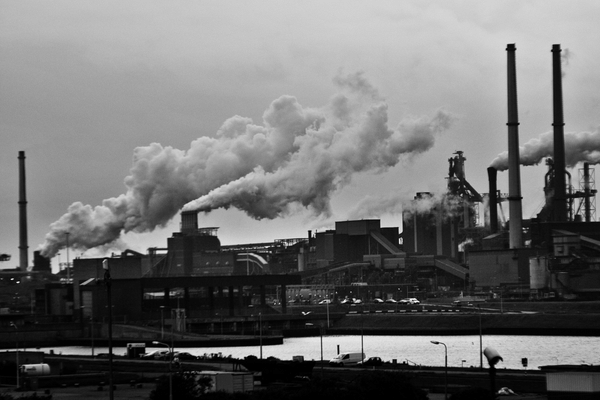
With the expansion caused by the industrial revolution, hygiene habits became even worse in large urban centers.
The look and attention to the need to keep environments clean only started to gain some importance in society in general in the middle of the century, in Great Britain, where the first public health campaign was carried out. The initiative aroused concern about domestic cleaning, which gradually grew stronger.
At that time, the scientist Louis Pasteur was responsible for several researches that contributed to the understanding of infectious diseases. His studies allowed a change in society’s position in relation to the need for cleaning and hygiene in places, as they showed that a remnant of dirt could generate germs and, consequently, various harms to human life.
Given the new understanding, there was a need to develop tools to facilitate the habit of cleaning. In 1860, Daniel Hess invented a machine with a rotating brush, operated by the feet and hands, that sucked up dust.
From 1905, the market began to be invaded by a range of varieties in vacuum cleaners with suction and rotating brushes. As early as 1963, with 41% of the population supplied by the electricity grids, the ease of using household appliances was popular with families, optimizing cleaning time and making it more efficient.
What is disinfection? And sterilization?
First, to start our conversation about ammonia quaternary, it is necessary to define what disinfection is.
Disinfection is a “process of elimination of vegetative forms, existing on inanimate surfaces, through the application of chemical and/or physical agents”.
Sterilization is the “complete elimination or destruction of all forms of microbial life, carried out in the hospital itself through physical or chemical processes”.
It is worth remembering that before carrying out the disinfection and sterilization steps, a superficial cleaning is necessary, which is the starting point for an environment or surface free of pathogens. You can read more about cleaning, disinfection and sterilization processes in our article dedicated to this topic.
What is ammonia quaternary? How does it work?
It is thanks to chemical compounds that the disinfection process takes place, with quaternary ammonia being one of the main disinfecting components. This is because it is a substance that is part of a family of compounds with antimicrobial action, with strong cationic active agents.
The quaternary of ammonia has a potent disinfectant activity, which acts by destroying the proteins of microorganisms, that is, it has the ability to act and decimate the plasma membrane or bacterial cell wall.
In this way, the quaternary ammonium disinfectant inhibits the synthesis of microorganisms, a vital process for the survival of pathological agents, destroying them.
Therefore, quaternary ammonia can be understood as a versatile substance with regard to disinfection actions, being present in:
- common disinfectants;
- semi-critical disinfectants;
- fungicides;
- virucides;
- germicides;
- bactericides;
- bacteriostatics;
- mold and mildew control agents.
For all these purposes, quaternary ammonium disinfectant is used in the manufacture of disinfectants for domestic, hospital, veterinary and industrial use.
Is ammonia a disinfectant?
Only ammonia is not a disinfectant.
Ammonia serves as a raw material for a large number of applications. It is used in the manufacture of agricultural fertilizers, fibers and plastics, cleaning products, explosives, etc. Among so many uses, we can highlight: Fertilizers: ammonium sulfate, ammonium phosphate, ammonium nitrate and urea.
What generations of quaternary ammonium disinfectant?
Just as understanding, practice, and awareness of cleansing have evolved over time, quaternary ammonia has also gone through a process of refinement that has been divided over generations, where increasingly powerful substances have emerged:
- 1st GENERATION
Benzalkonium chloride was the first quaternary ammonium-derived compound introduced to the market.
- 2nd and 3rd GENERATIONS:
The second and third generation quaternary ammonium compounds (first and second together) are the ones that remain most active in the presence of hard water. In these, the bactericidal action is attributed to the inactivation of enzymes, denaturation of essential proteins and rupture of the cell membrane.
- 4TH GENERATION:
In the fourth generation, we have compounds with superior germicidal activity, low foaming and high tolerance to protein loads and hard water. These are indicated for disinfection in the food and beverage industry, given their low toxicity.
- 5TH GENERATION:
Here, a mixture of 4th generation quaternary ammonia with another compound, Dimethyl. As a result, we have an increase in the spectrum of action and effectiveness.
What are disinfectants? How to choose the ideal?
Disinfectants are cleaning products made from chemicals capable of destroying bacteria, fungi and viruses. However, it is important to note that they do not have the ability to eliminate spores.
It is also important to highlight that the disinfectant marketed in a responsible and safe way must contain the following characteristics:
- bring your registration number with the Ministry of Health on the label;
- be used strictly in the manner indicated in the instructions;
- specify which microorganisms it fights.
- penetrability;
- broad spectrum;
- residual activity (time in which a chemical product maintains its active principle as a protective or defensive);
- minimal toxicity;
- fast action;
- non-corrosive;
- easy to use;
- non-unpleasant odor;
- economic.
Quaternary ammonium disinfectant x detergents: do you know how to use it correctly?
After discussing tips on how to choose the best disinfectant, it is necessary to remember that it will have no effect if it is used improperly.
In some situations, quaternary ammonium disinfectant compounds can be used as detergent substitutes, however, as some have low cleaning capacity compared to anionic and non-ionic detergents, they are unable to fulfill the same role. Still, detergent formulations can also contain quaternary ammonia, adding value to the cleaning product.
You need to be aware of what each item delivers to achieve the desired efficiency. In this sense, a company specialized in professional cleaning supplies, such as Higiclear, will be able to offer the most assertive and economical solutions for each purpose of hygiene procedure.
Disinfectants vs alcohol: which is more efficient?
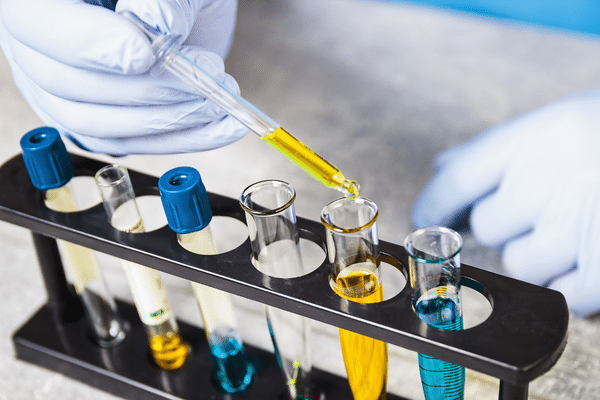
Quaternary ammonium disinfectant performs better than 70% alcohol in disinfecting hospital environments.
Another product linked to disinfection that causes doubts is alcohol. Can it be said that it fulfills the same function as a quaternary ammonium disinfectant?
To address this issue, we used information from the article “Comparison of the effectiveness of alcohol and quaternary ammonia with the use of disinfection technique for horizontal surfaces” which show that the substances used as disinfectants during the study were effective in reducing the growth of selected microorganisms.
The research aimed to compare the effectiveness of 70% alcohol and quaternary ammonia in nursing practice (specifically in a testing room of a laboratory accredited by the REBLAS/ANVISA Network).
The conclusion was that “the fifth generation quaternary ammonia is much superior to alcohol at 70%, and there is no need, during its use, to apply the technique of disinfection of horizontal surfaces consecrated in nursing, constituting a breach of paradigm in the face of the effectiveness of this product”.
In which products is quaternary ammonia used?
In addition to disinfectants and cleaning products, quaternary ammonia is present in the cosmetics industry, synthesized in conditioning creams, hair masks and leave-in creams. In these cases, it presents itself more smoothly, giving a silky and soft touch to the hair. because of its emulsifying and antistatic properties.
Quaternaries can also be used
Solutions in residential and business disinfection from Higiclear.
Finally, we come to our disinfection products that contain quaternary ammonia, combined with other ingredients, enhancing the final result. Higiclear’s solutions offer the ideal balance for better results and more savings.
Check it out:
Oxikill hospital disinfectant
A product that is a cleaner, chlorine-free bleach, deodorant and disinfectant for hospital use. It is a quaternary ammonium bactericidal disinfectant and other important components. It is suitable for cleaning and disinfecting floors, walls, partitions, furniture, countertops, sanitary ware, curtains and other fixed surfaces and non-critical items.
In addition, the product has proven effectiveness in the presence of organic matter, performing the functions of cleaning, bleaching and disinfection in a single operation, optimizing the time of the procedures.
It can be used safely in healthcare environments such as dental offices, outpatient clinics, hospitals, clinics, clinical analysis laboratories and other healthcare establishments.
The main benefits of Optigerm Oxikill Hospital Sanitizer with Quaternary Ammonia and Peroxy are:
- Cleaning and disinfection in a single operation;
- Safety for the user (low oral and dermal toxicity, as well as low dermal and ocular irritability and also absence of genotoxic and teratogenic effects);
- Microbiological efficacy (has hydrogen peroxide associated with 5th generation quaternary ammonium as active principle. In this way, the product acts on a broad spectrum of microorganisms, even in the presence of organic matter;
- Proven residual effect (test carried out in an independent Oleak laboratory proved the residual biocidal effect of Optigerm Oxikill® for 7 days. Studies show that germs re-populate surfaces within minutes after disinfection. However, the residual effect of Optigerm Oxikill® guarantees a extra protection in the fight against Health Care-Related Infections (HAI);
- Composed of two important agents: quaternary ammonia and hydrogen peroxide which, combined, generate a potentiated result.
Performance:
- Wet cleaning, carried out with a mop or cleaning cloths: about 20 m² per liter of diluted product;
- Wet cleaning, carried out with an industrial waxer or scourers: about 7 m² per liter of diluted product;
- Spraying, carried out with a backpack sprayer or nebulizer, in an unfurnished environment (1.5 meters of wall and floors): approximately 10 m² of construction per liter of diluted product.
Quaternary ammonium disinfectant PHMB – Optigerm HyperC
Another solution from Higiclear for disinfection is the hospital disinfectant with quaternary ammonium and PHMB (polyhexamethylene biguanide), Optigerm HyperC. It is a product suitable for cleaning and disinfecting non-critical items and fixed surfaces in general, such as ceilings, floors, walls, partitions, furniture, countertops, sanitary ware, curtains, etc.
Thus, it can be used in terminal cleaning routines and competitors in the most varied health establishments, such as outpatient clinics, dental offices, hospitals, clinics, clinical analysis laboratories and other health care establishments.
Benefits of Optigerm HyperC Hospital Sanitizer:
- Cleaning and disinfection in a single operation (its own formulation is highly effective and efficient for terminal and concurrent cleaning in healthcare establishments);
- Safe for the user (has low oral and dermal toxicity, low dermal and eye irritability and absence of genotoxic and teratogenic effects);
- Microbiological efficacy (has the active ingredient polymeric biguanide PHMB, associated with 5th generation quaternary ammonia. Therefore, it acts on a wide spectrum of microorganisms, even in the presence of organic matter).
Performance:
- Wet cleaning, carried out with a mop or cleaning cloths: about 20 m² per liter of diluted product;
- Wet cleaning, carried out with an industrial waxer or scourers: about 7 m² per liter of diluted product;
- Spraying, carried out with a backpack sprayer or nebulizer, in an unfurnished environment (1.5 meters of wall and floors): approximately 10 m² of construction per liter of diluted product.
Finally, as we have seen throughout the article, Higiclear’s disinfection solutions contain quaternary ammonia, associated with other chemical agents, which potentiate and expand its effects and functions. The mixtures, in this case, are safe and meet the standards required by ANVISA and by the bodies that regulate the commercialization of cleaning products. At the time of purchase, whether for residential or business use, this guarantee is essential.
Contact Higiclear and be sure of efficient, conscious, economical and responsible cleaning and disinfection.
See you next week!
References:
UFPR
https://escsresidencias.emnuvens.com.br/hrj/article/view/389

